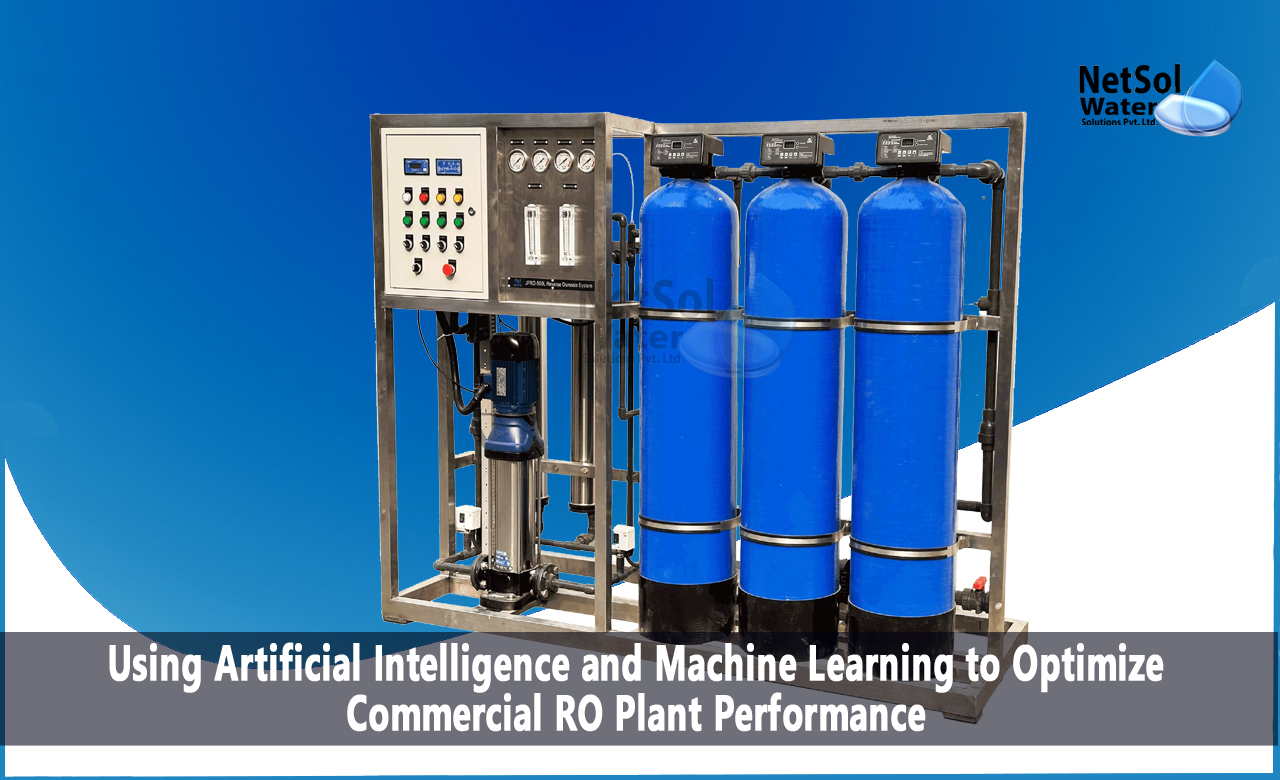Reverse Osmosis (RO) is a widely used technology for water treatment in commercial and industrial applications. However, optimizing RO plant performance is a complex task that requires continuous monitoring and adjustments. With the emergence of Artificial Intelligence (AI) and Machine Learning (ML) technologies, it is now possible to optimize RO plant performance by analyzing data in real-time and making automated adjustments.
In this blog, we will explore how AI and ML can be used to optimize commercial RO plant performance.
What is Artificial Intelligence and Machine Learning?
Artificial Intelligence (AI) is the simulation of human intelligence processes by machines. It involves the development of algorithms and systems that can learn from data and make decisions based on that data. Machine Learning (ML) is a subset of AI that involves the development of algorithms and models that can automatically improve their performance through experience.
How AI and ML can be used to optimize commercial RO plant performance?
AI and ML can be used to optimize commercial RO plant performance in several ways. Here are some examples:
- Real-Time Monitoring: AI and ML algorithms can be used to monitor the performance of RO plants in real-time. This includes monitoring the flow rate, pressure, and TDS levels. This data can then be used to make real-time adjustments to the system to optimize performance.
- Predictive Maintenance: AI and ML algorithms can be used to predict when maintenance is required based on the performance data of the RO plant. This can help to reduce downtime and prevent equipment failure.
- Energy Optimization: AI and ML algorithms can be used to optimize the energy consumption of the RO plant. This includes optimizing the pump speed and pressure to reduce energy consumption while maintaining the desired water quality.
- Process Optimization: AI and ML algorithms can be used to optimize the RO plant process by adjusting the feed flow rate, recovery rate, and reject flow rate. This can help to improve the overall performance of the RO plant and reduce operating costs.
- Fault Detection: AI and ML algorithms can be used to detect faults in the RO plant system. This includes identifying clogged membranes, broken pumps, and leaks. This can help to prevent equipment failure and reduce maintenance costs.
Benefits of Using AI and ML to Optimize RO Plant Performance
The benefits of using AI and ML to optimize RO plant performance are numerous. Here are some of the main benefits:
- Increased Efficiency: AI and ML can help to optimize RO plant performance and reduce operating costs.
- Improved Water Quality: By optimizing the RO plant process, AI and ML can help to improve the overall water quality.
- Reduced Downtime: By predicting when maintenance is required and detecting faults, AI and ML can help to reduce downtime and prevent equipment failure.
- Increased Sustainability: By optimizing energy consumption, AI and ML can help to reduce the carbon footprint of the RO plant.
Conclusion
AI and ML are powerful tools that can be used to optimize the performance of commercial RO plants. By monitoring performance in real-time, predicting maintenance requirements, optimizing energy consumption, and detecting faults, AI and ML can help to improve the overall efficiency and sustainability of the RO plant. As AI and ML technologies continue to advance, we can expect to see even more innovative solutions for optimizing RO plant performance.
For any other support, inquiries, or product purchases, call on +91-9650608473 or email at enquiry@netsolwater.com



